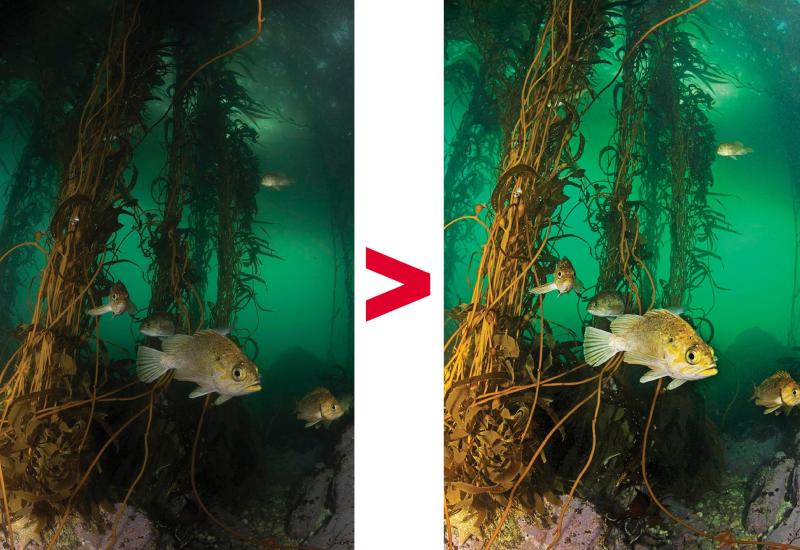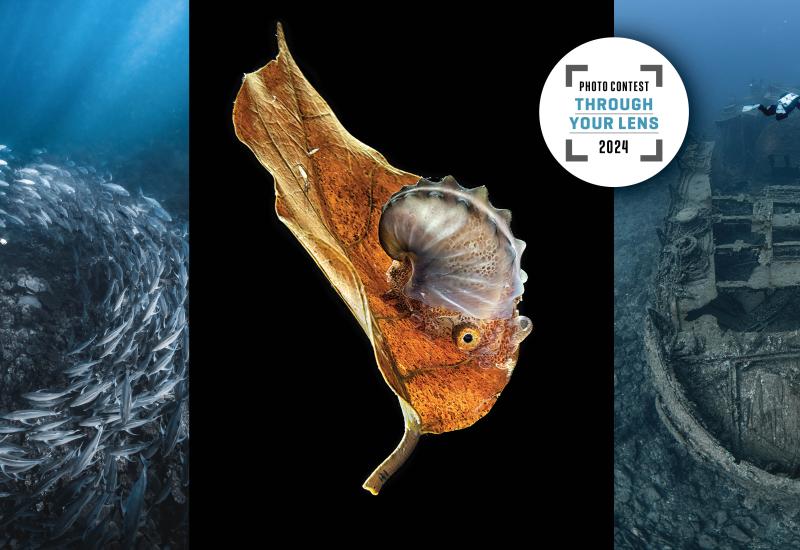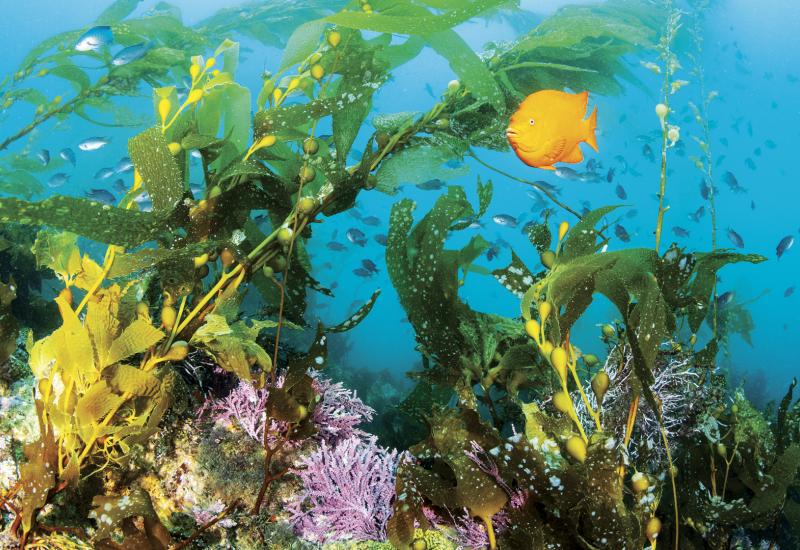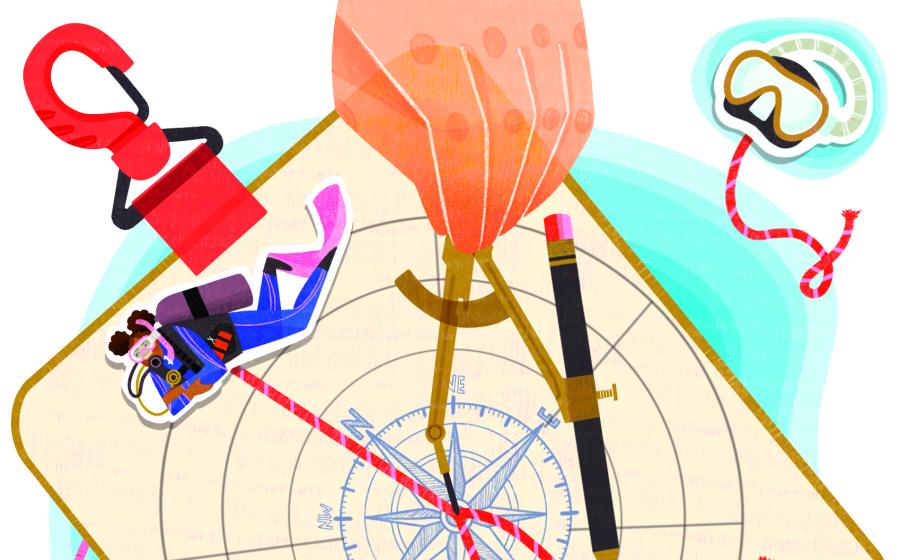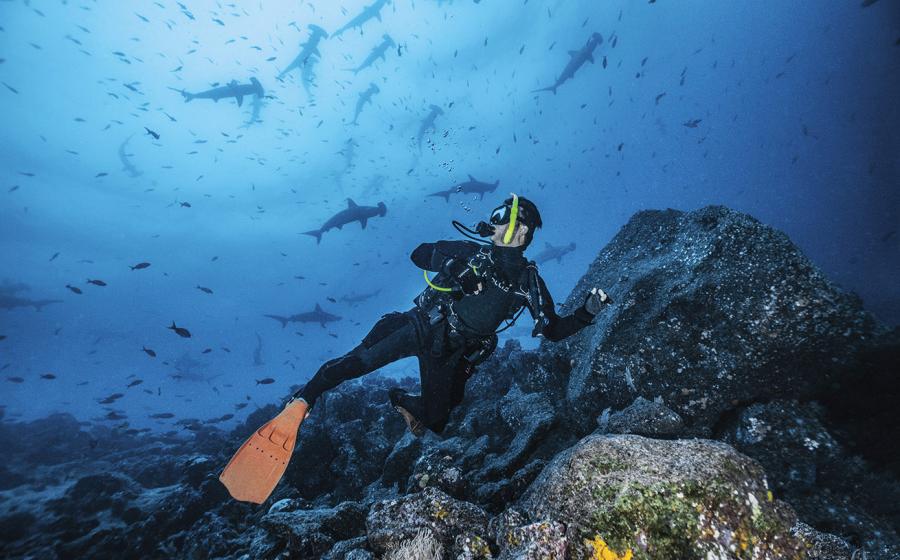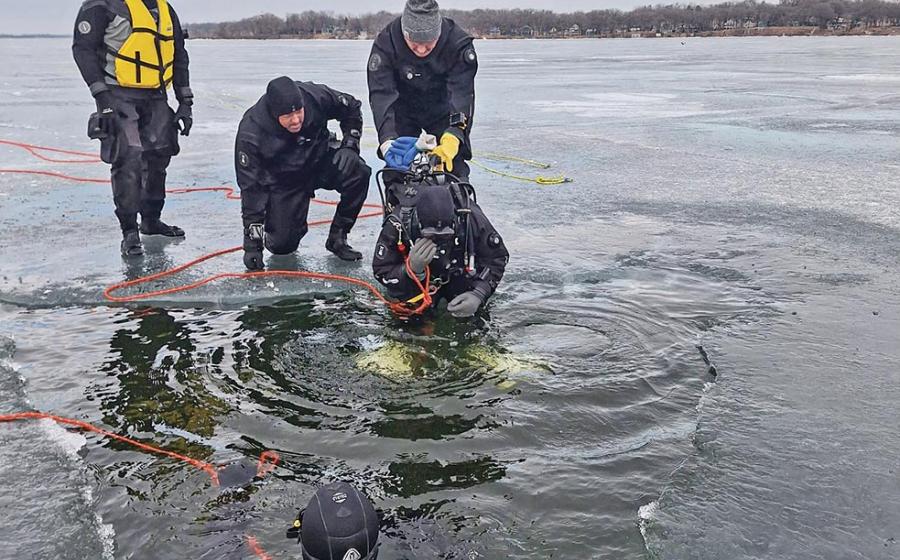Night Moves
During a recent trip to Belize, I found myself back on one of my favorite live-aboards, the Belize Aggressor, doing a night dive out at Lighthouse Reef. On a dive site called Que Brada (Spanish for "the Break"), there is a great outward turn in the wall where the coral massif sheers toward the open sea. This dramatic drop-off makes for an awe-inspiring sight during the day, but at night it's the shallows that offer spectacular encounters with Caribbean reef squid (Sepioteuthis sepioidea). On this particular night dive I was on a mission to bring home some great footage of these wily creatures. That being the case, I decided to stick to a few rules that simplify this potentially overwhelming endeavor.
1. Always use a backup light for your video lights to spot your subjects and to light your way home should your video lights run low.
2. Be familiar with the night dive spot by having dived there during the day, and carry a compass.
3. Swim and move only as quickly as you need to encourage a meaningful encounter for the video. Keeping the camera smooth is more difficult in the dark, but is absolutely essential if you want to make professional-looking video.
4. Be familiar with the night creatures you are hoping to capture on video. Know their habitat and their behaviors. This will increase the odds of your being in the right place at the right time.
5. Know your housing controls without having to see them. Only familiarization with these controls by having accessed them a lot during day dives can give you this familiarity, so practice a lot in advance in the bright light of day.
6. Don't try to do too much. Know specifically which animal(s) or events you hope to capture before you hit the water, and keep the list short and sweet. When in unfamiliar territory I often consult and dive with the local guides who can take me directly to what I want to film.
On this particular night I struck my HIDs, and as they came to temperature I descended and traversed the reef buttress toward the shallows. As the colors brightened before my eyes, my peripheral senses started to tingle. I looked up and screamed, "Whoa!" as a 5-foot-long mirror-like tarpon nearly bulldozed over me. I jerked back as the percussive blast of the tarpon's tail veered the powerful fish up and over my shoulder. My HIDs had become the focal point of hundreds of tiny baitfish that were trying to avoid the hungry tarpon. As my heartbeat dropped below 120 beats per minute, I made my way to the shallows, where the feathery gorgonian plumes of the genus Pseudopterogorgia gently swayed back and forth in the gentle swell. This was, I knew from previous encounters, the realm of the night reef squid. Here they are invisible to the dangerous tarpon, and here they lie in wait, with acute night vision and capacity for jet-propelled predatory lunges, for the tiny baitfish that feed them well. What attracts me to these squid the most is their fabulous display of changing colors that dance over their bodies in the night lights and that form part of how they communicate with each other.
Within minutes I was there in the shallows, searching for squid low among the feathery gorgonians and out at the edge of my nightlight. Soon I was rewarded, for I found a pair glowing purple and gold. I struck my video lights, white-balanced on the sand and manually focused on a nearby rock with the zoom set on "wide." As I slowly engaged them, they hovered, on the verge of jetting away. Slowly I made circles around them, disorienting their night vision as I did so, but being careful to make no sudden movements. Playing with the exposure control, I dialed the exposure down a bit to achieve a saturated image and began to record the establishing scene -- the "wide shot" -- as I circled the pair. Settling one fin to the sand, I steadied myself, zoomed in for a higher magnification, refocused, dialed down the exposure a bit, and recorded the "medium" shot as the pair displayed their colors for the camera.
Next I moved in for maximum magnification, the all-important "close shot." Holding the camera perfectly still, I refocused, adjusted my lights to illuminate the pair (now nearly bumping into the lens as they frantically flashed colors), dialed down the exposure a bit, and composed as I gently hit the record button. In the monitor I could see it happen, and I moved with the action, but smoothly and slowly, as the pair displayed electrifying colors for an extended close encounter that made my video night dive an exciting success.
After a minute I eased away from them to create a closing scene, and as I did, one of the pair disappeared in a cloud of ink, the cloud that signified the natural ending to the sequence that you can see.


